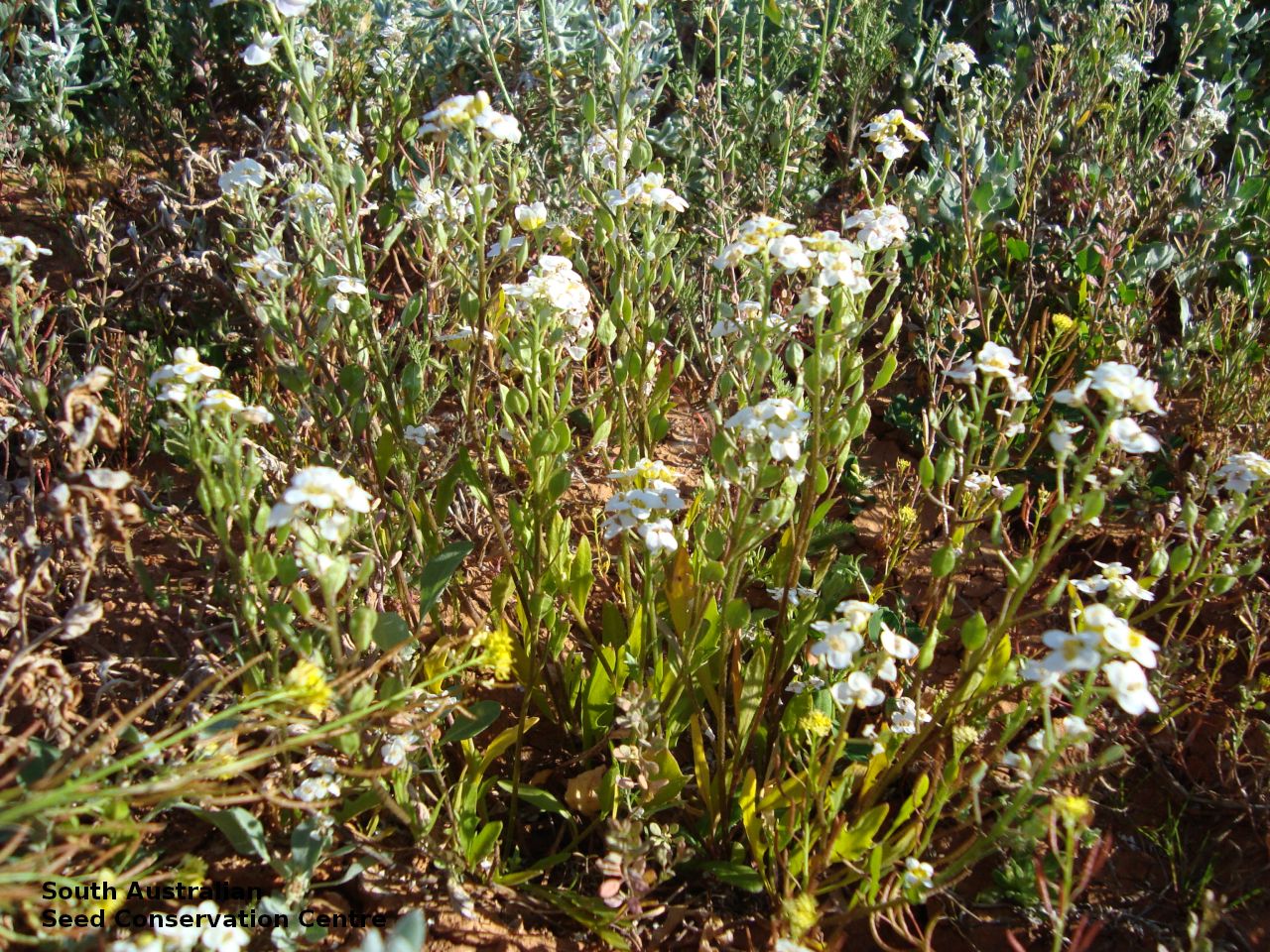
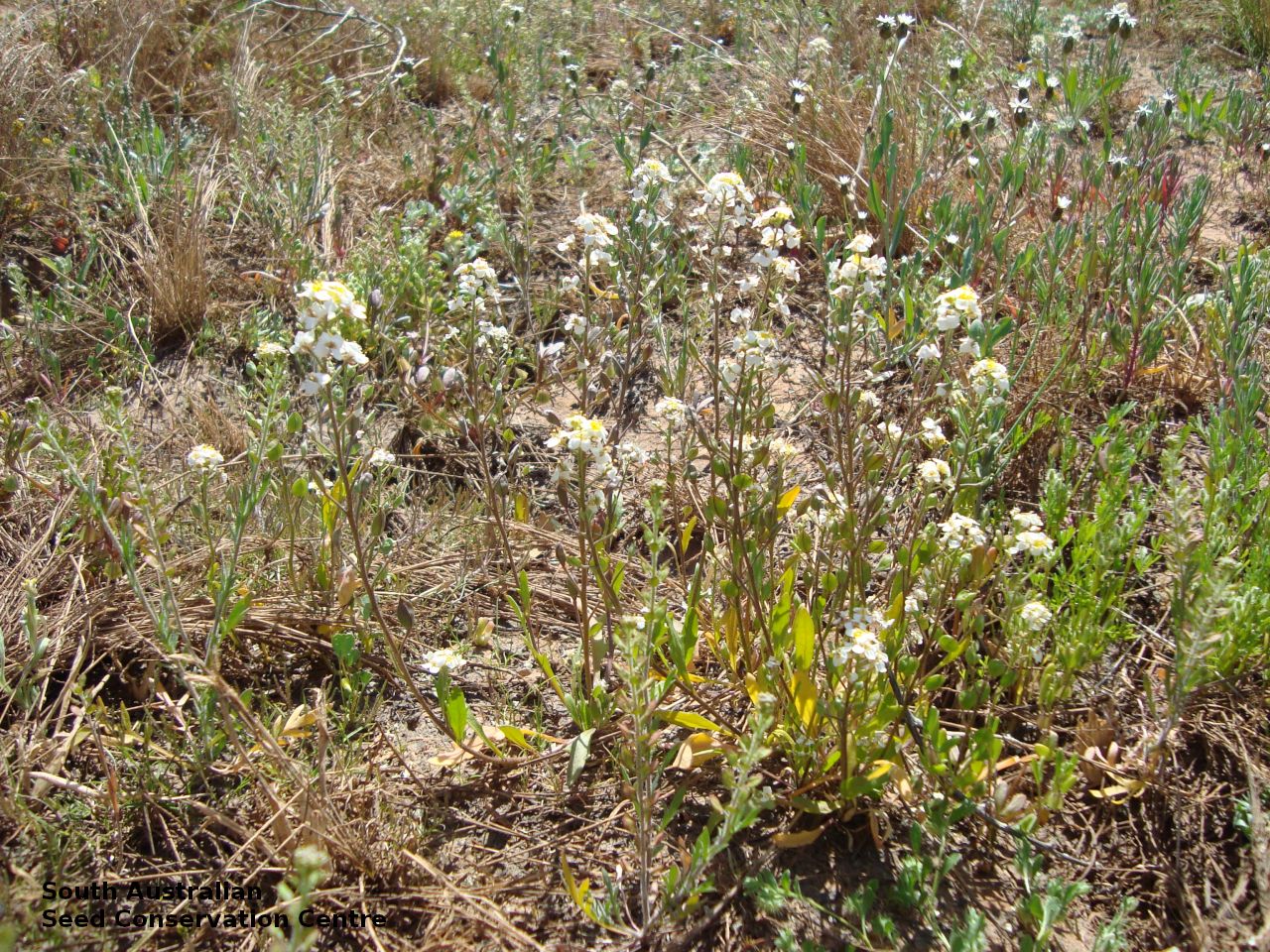
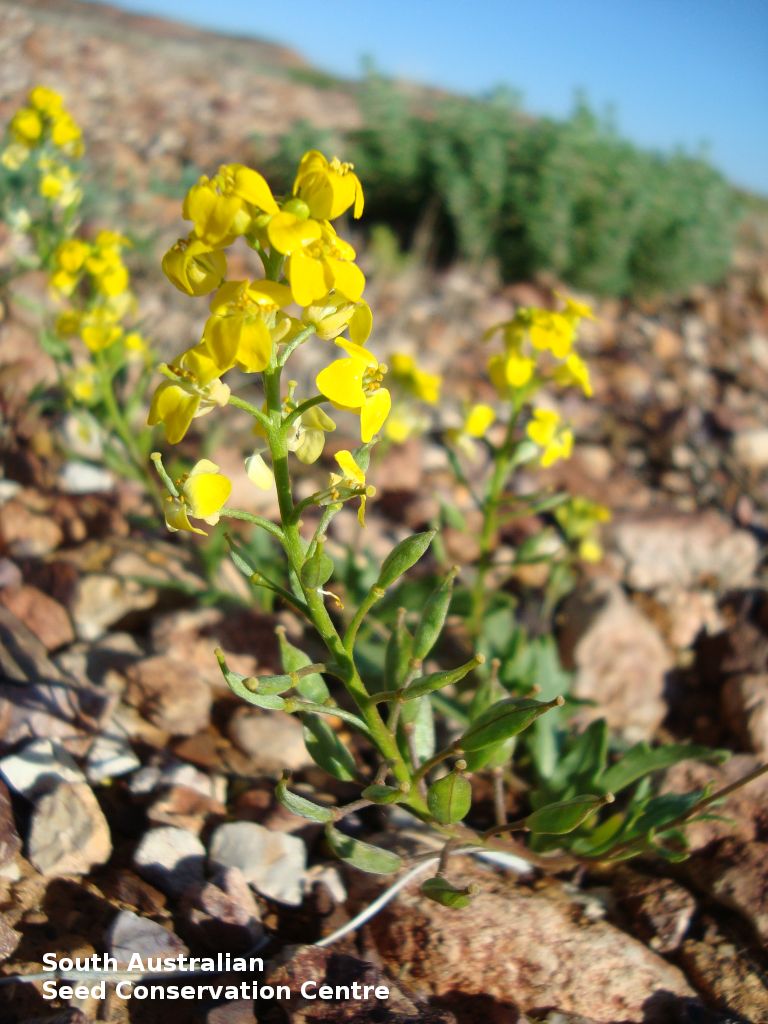
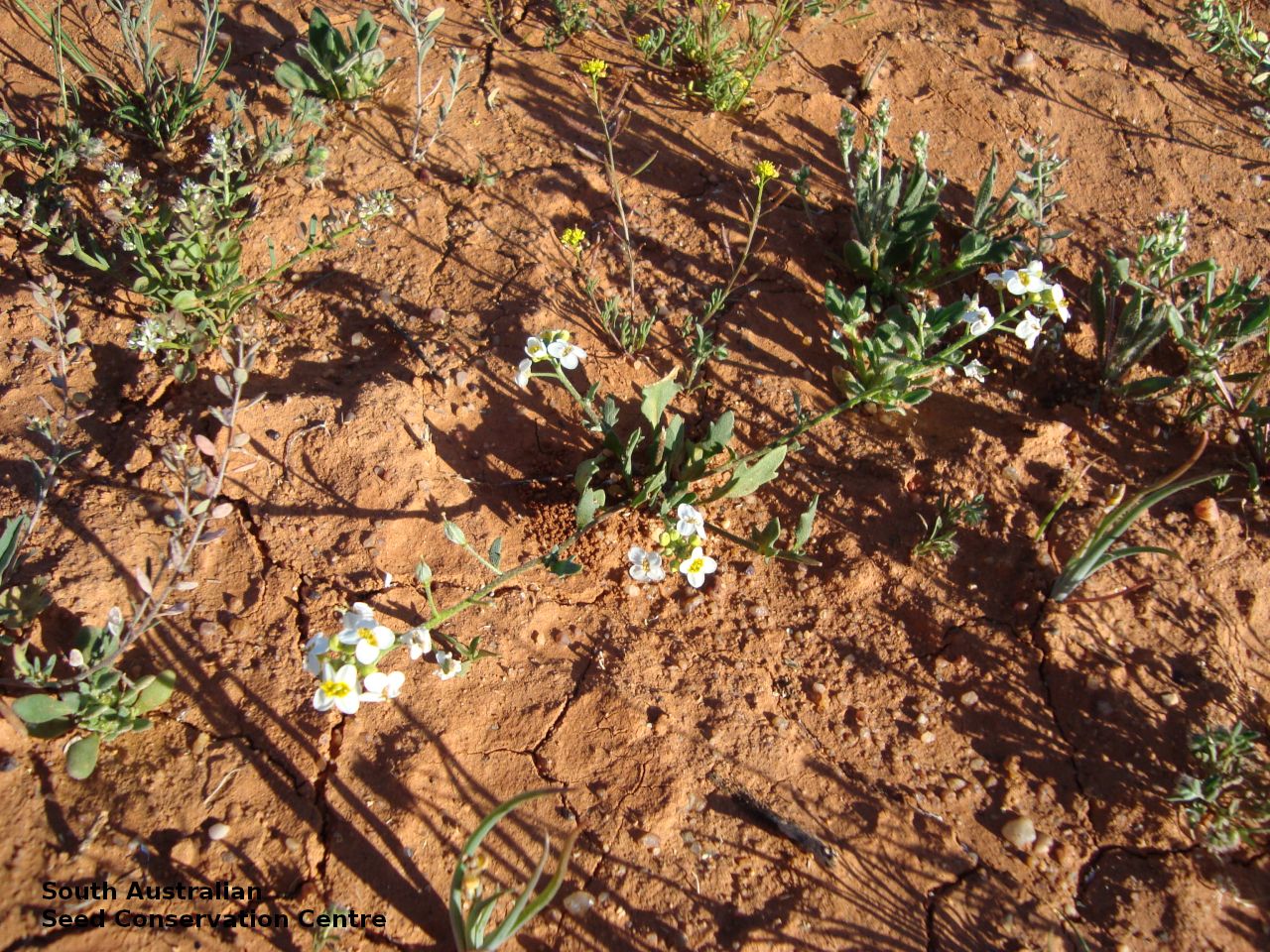
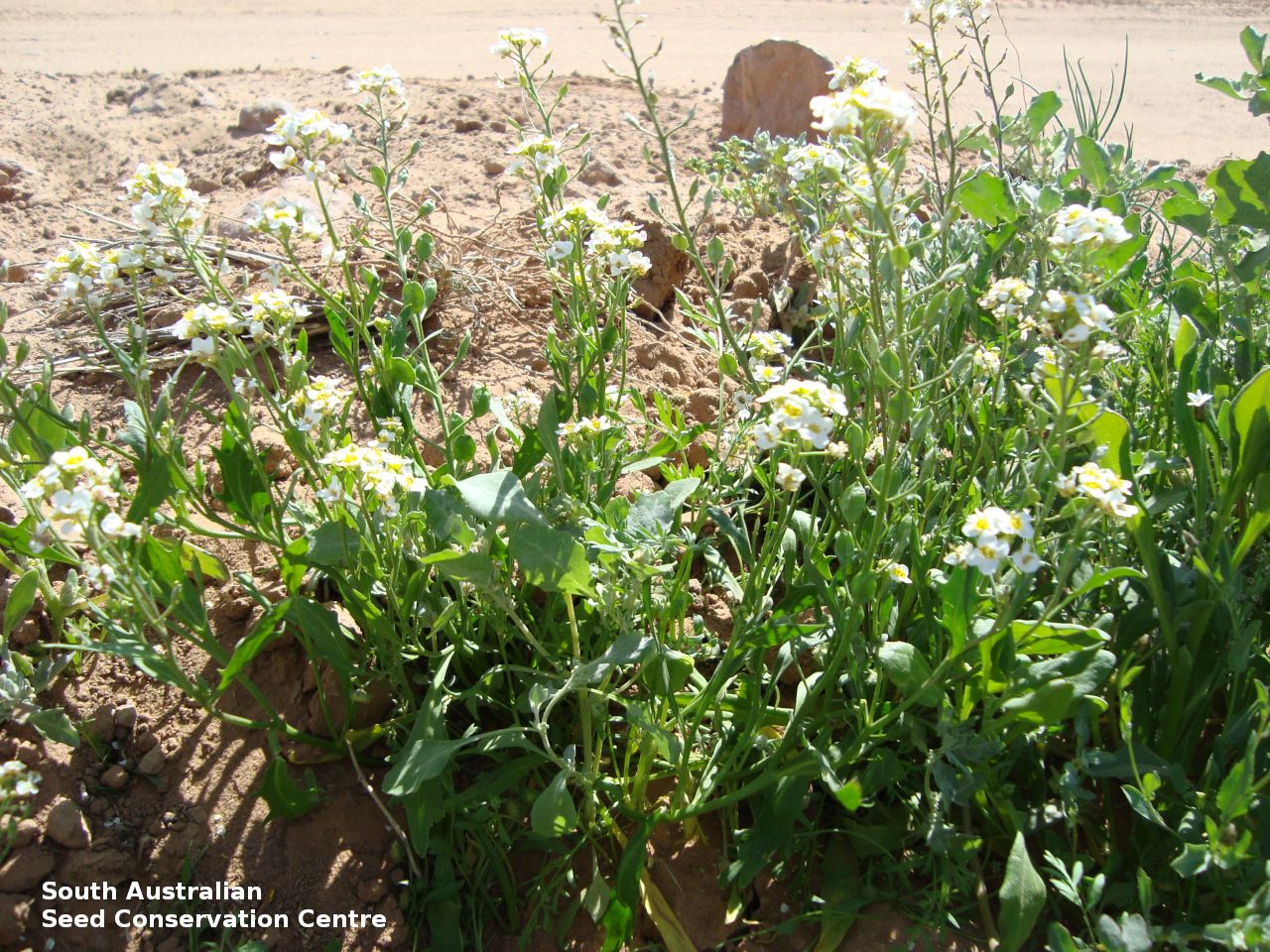
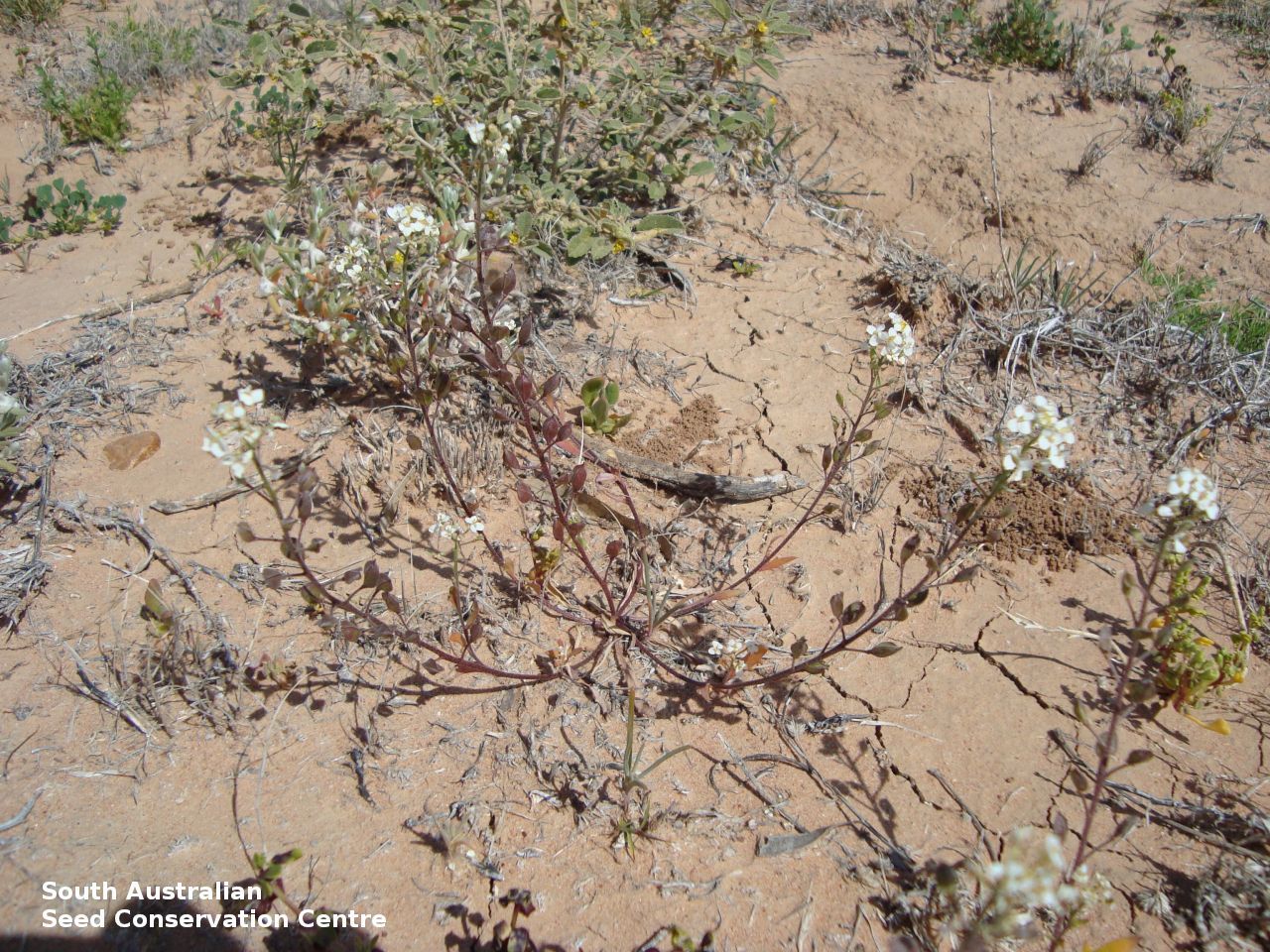
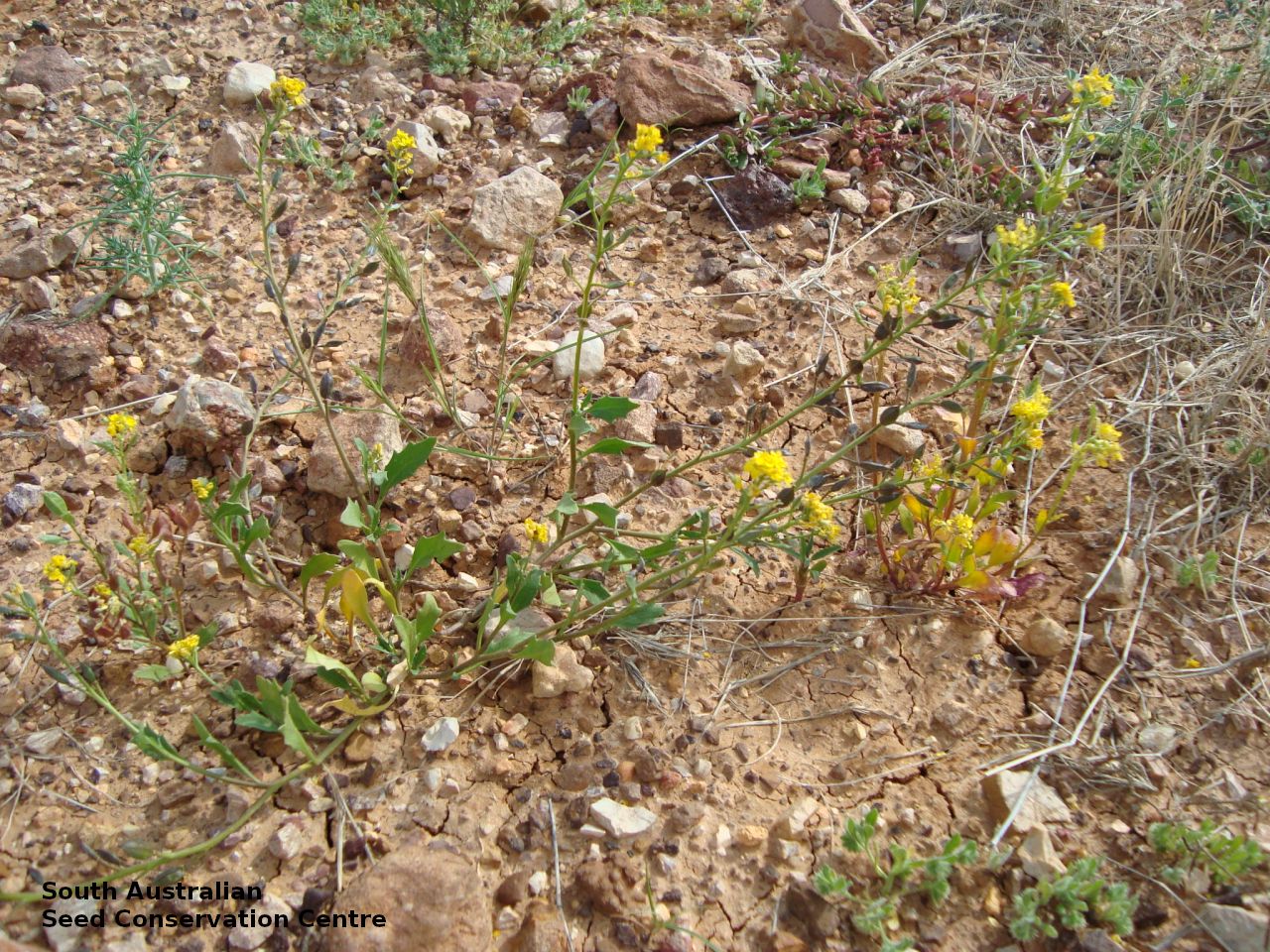
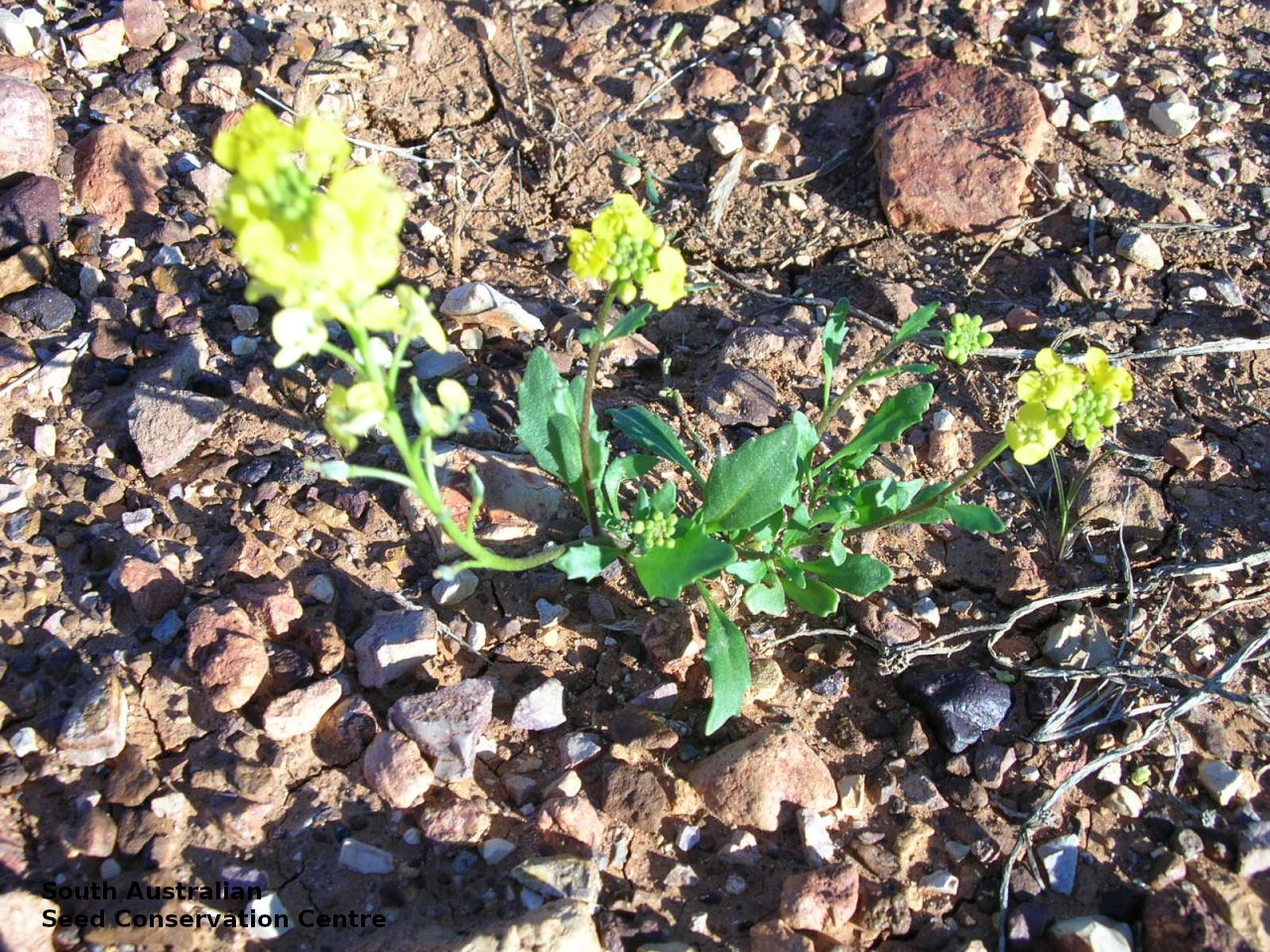
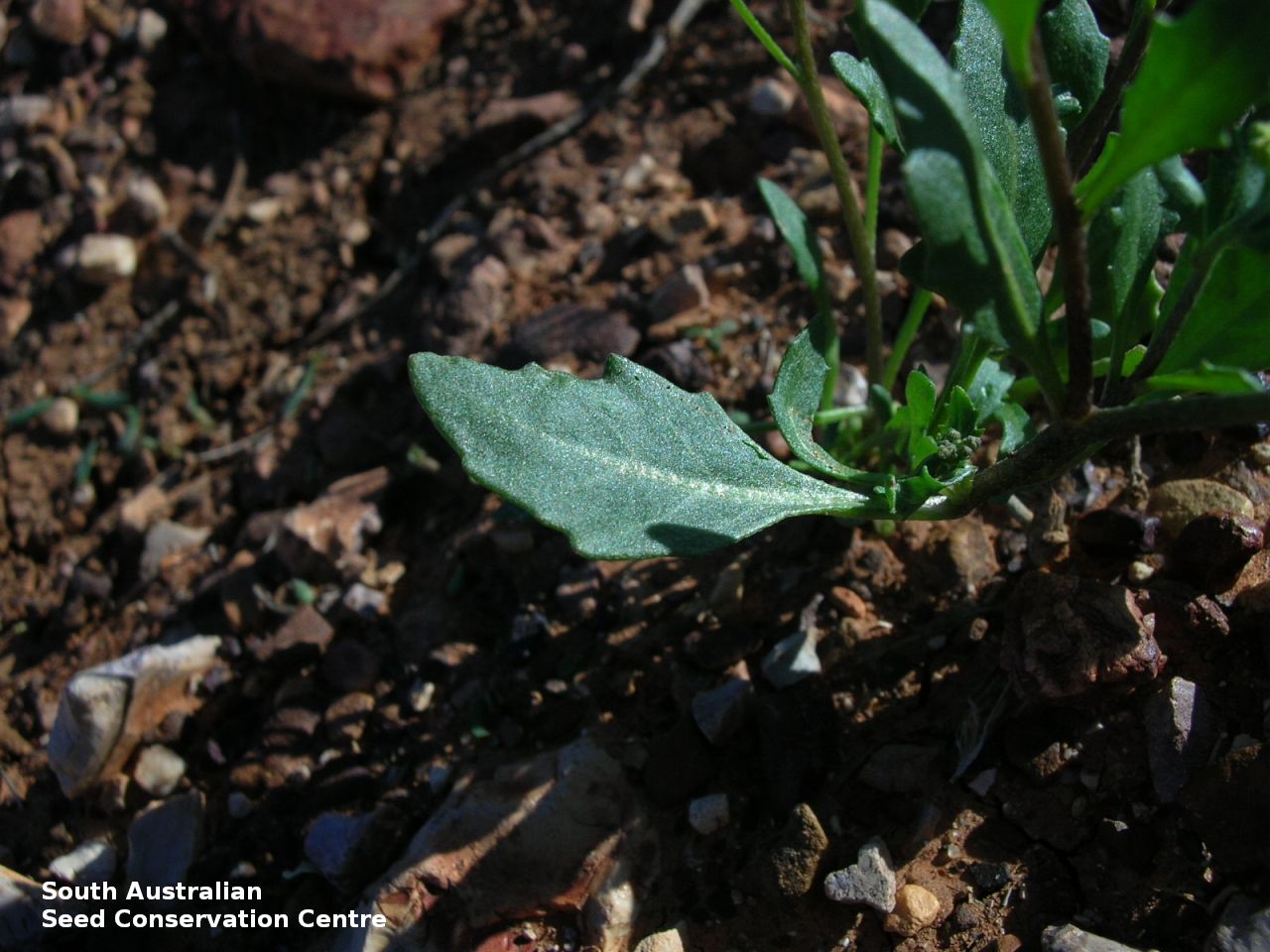
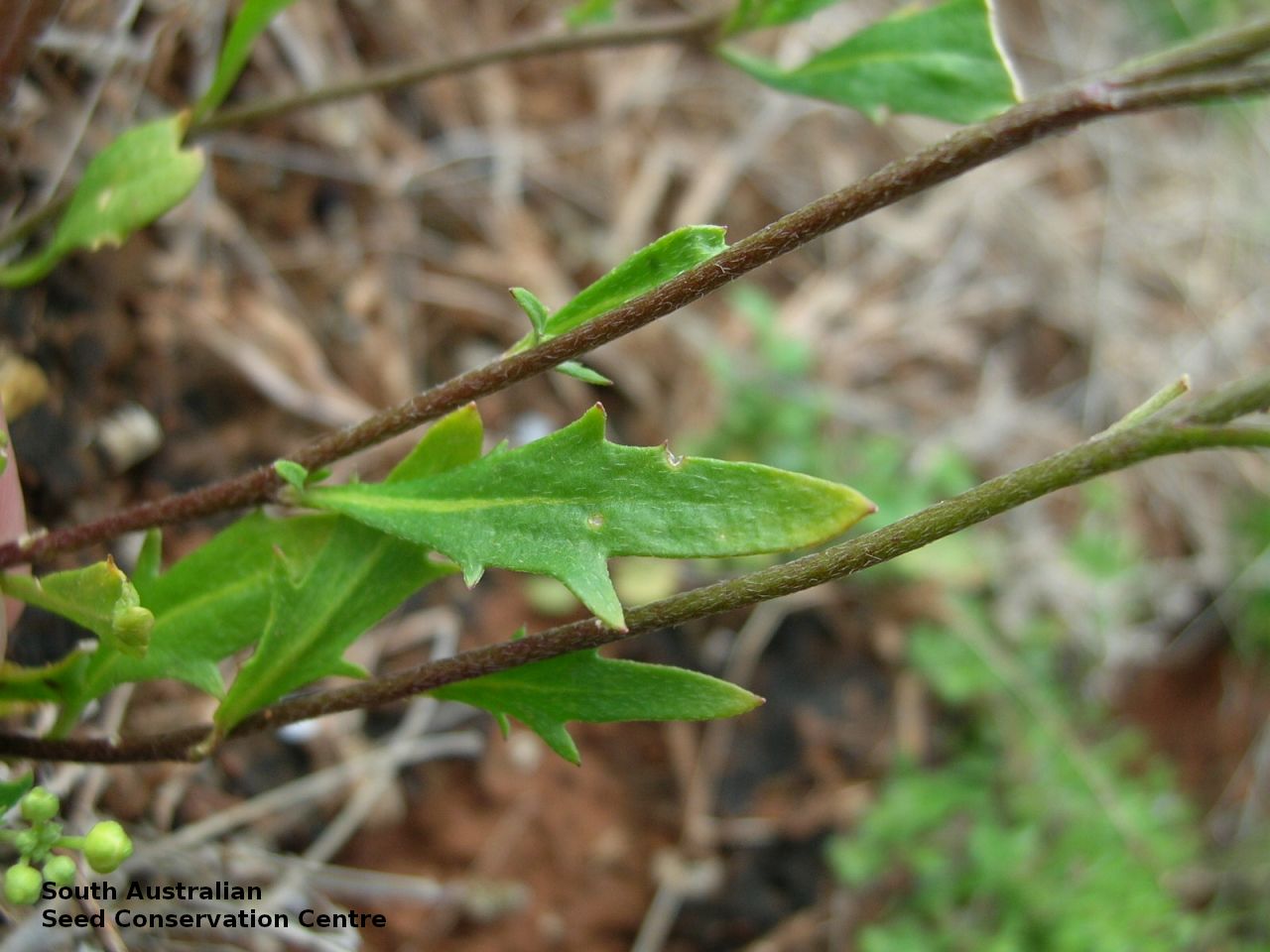
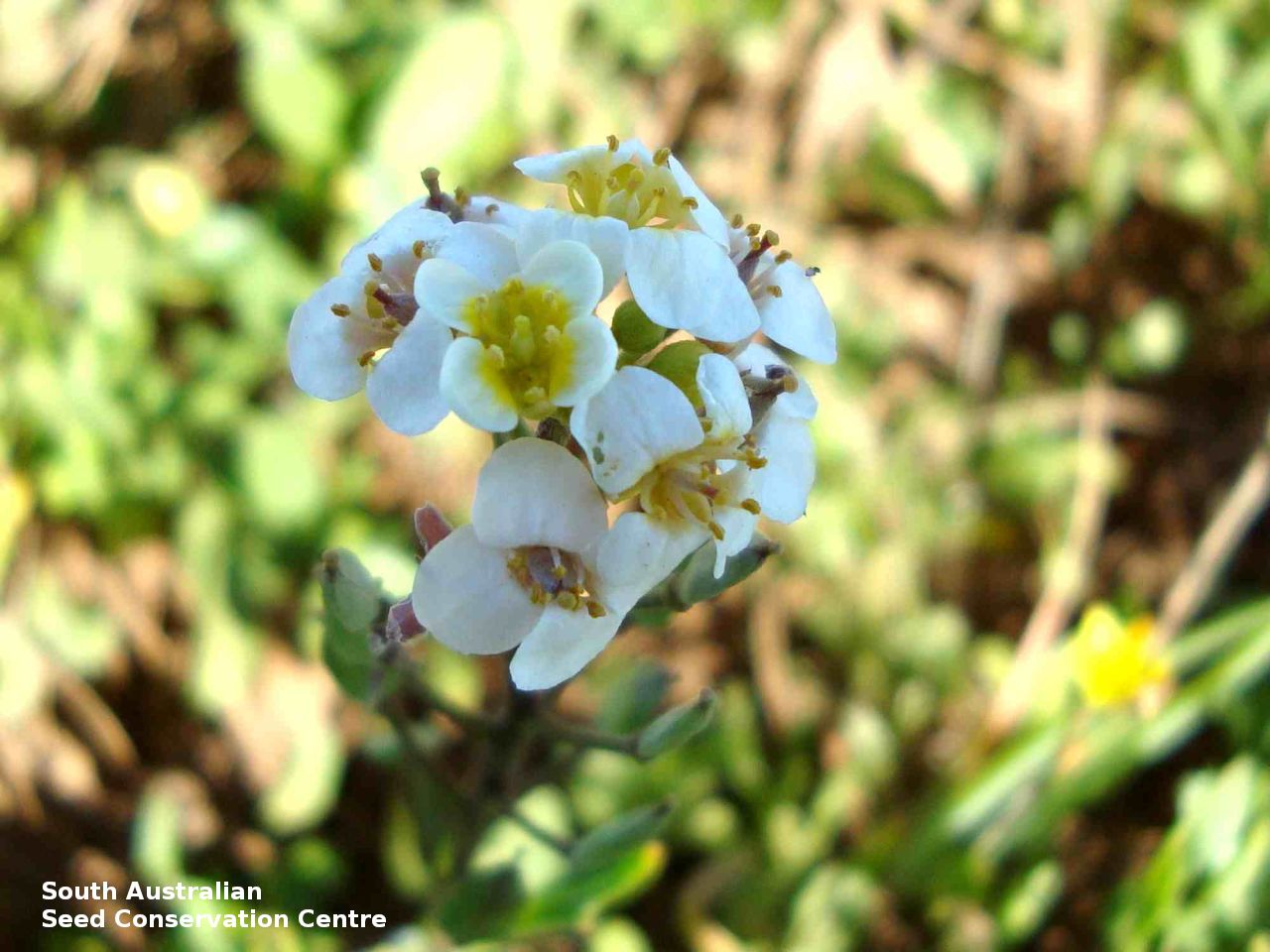
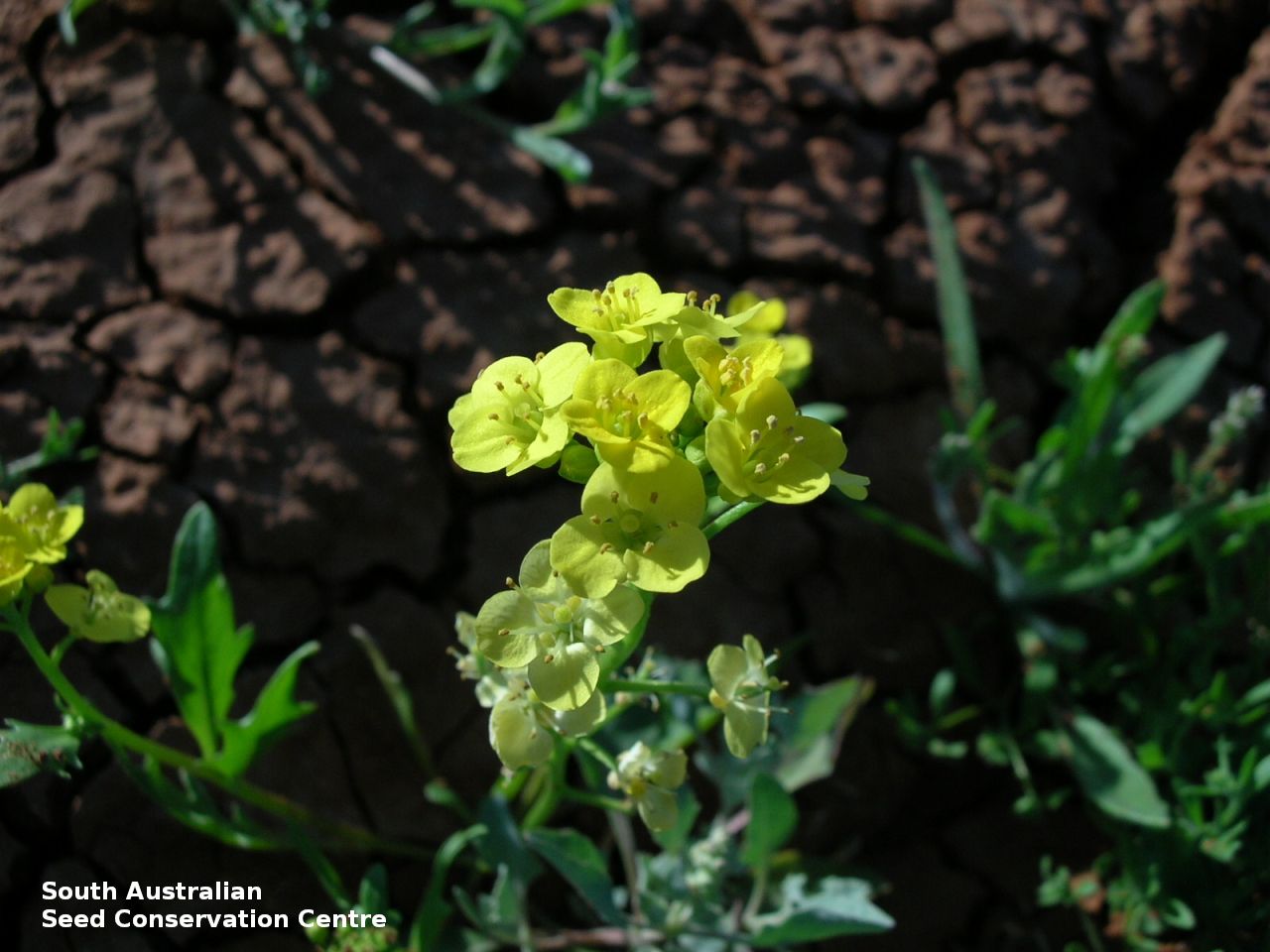
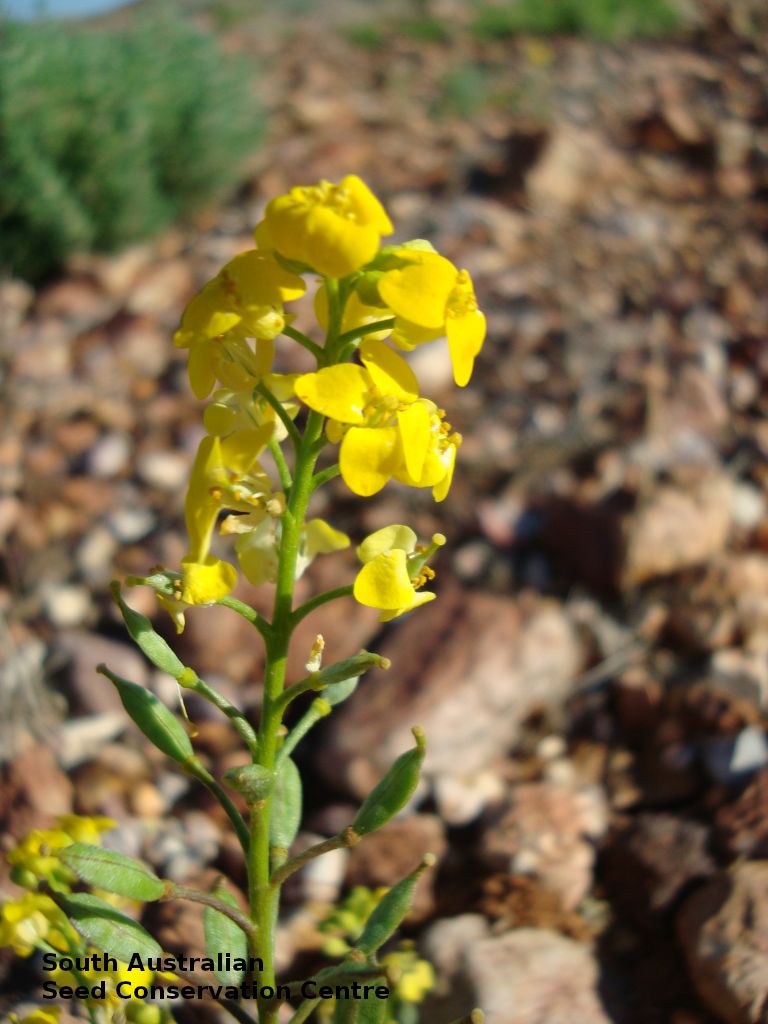
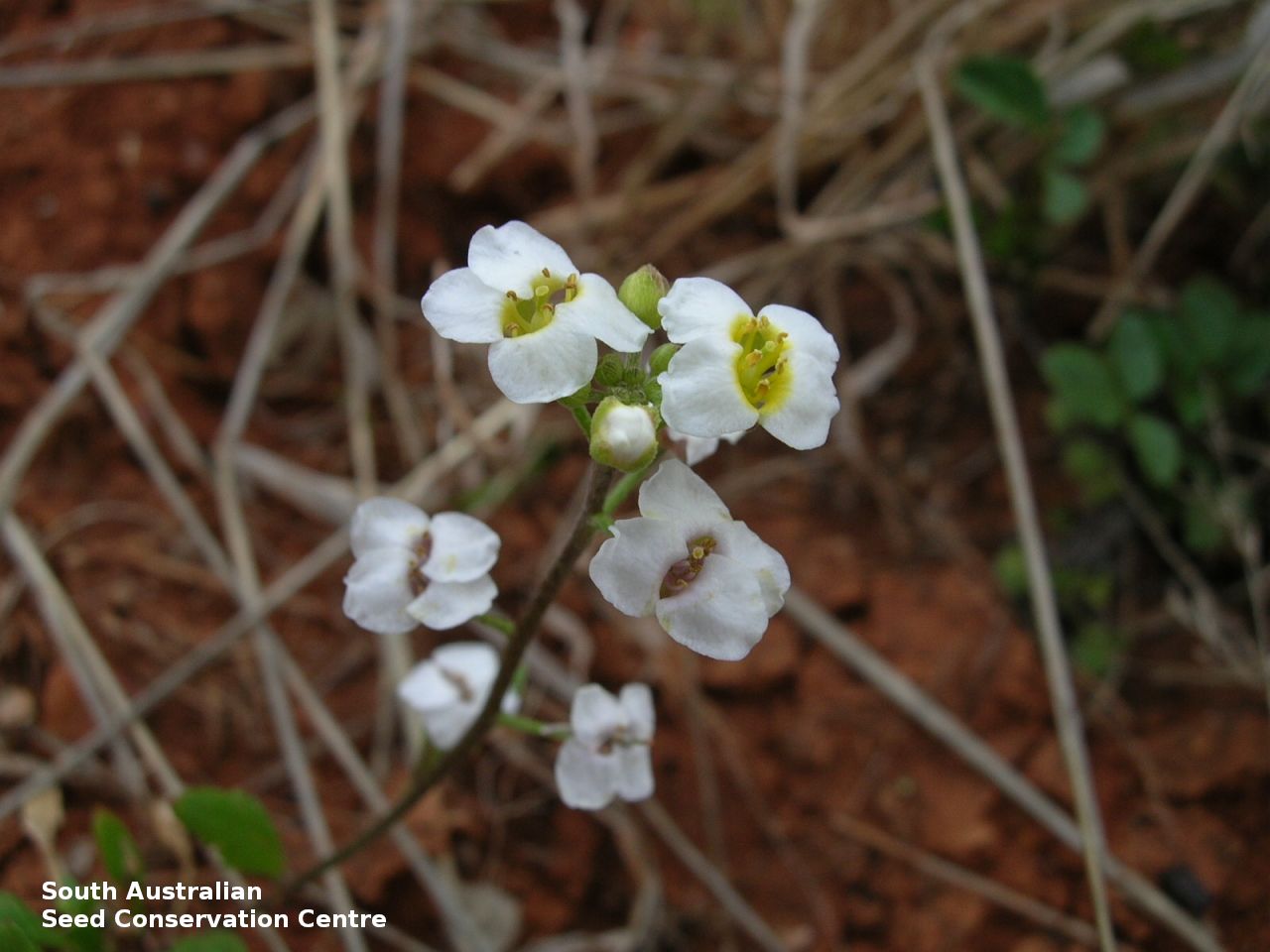
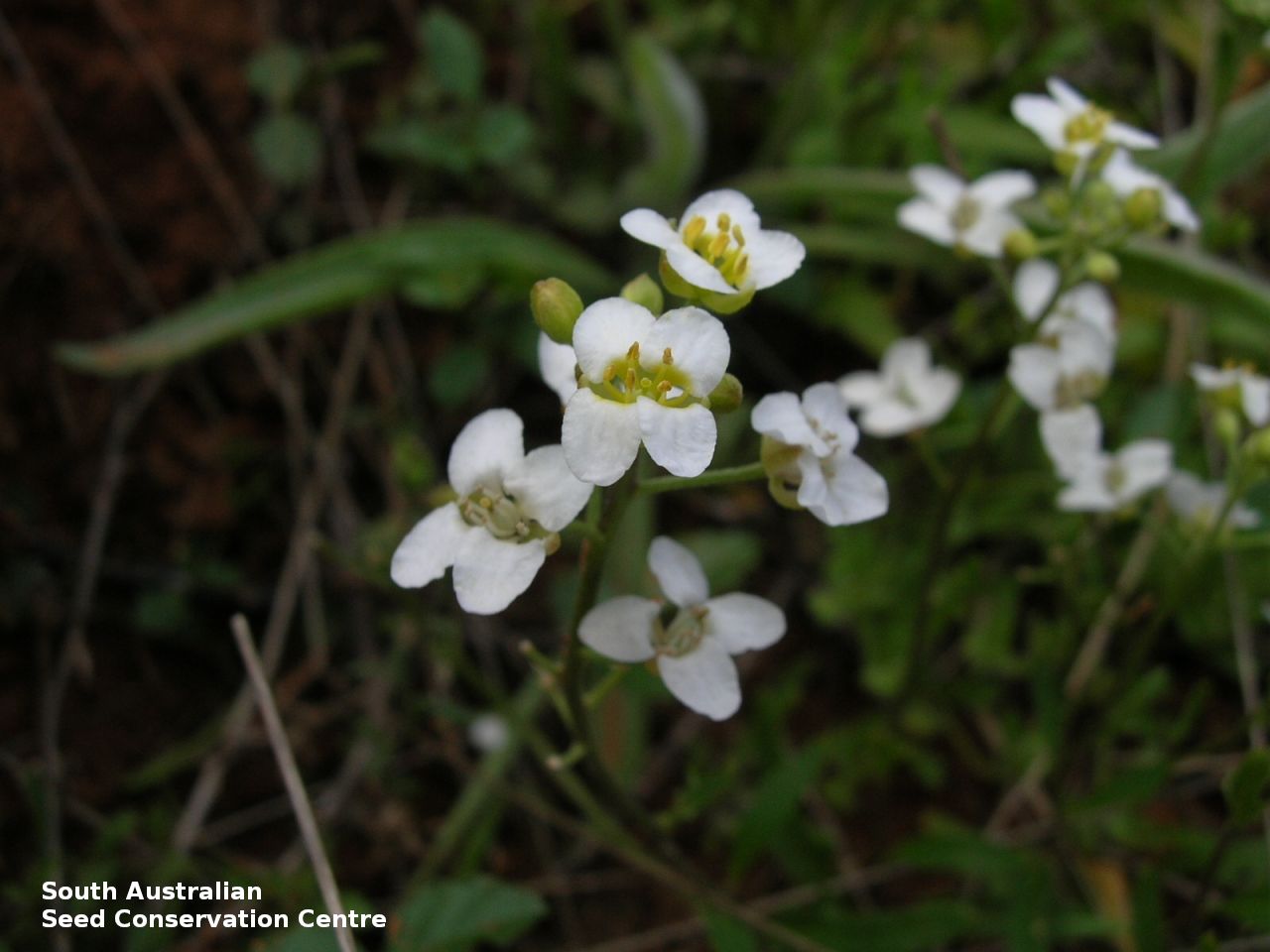
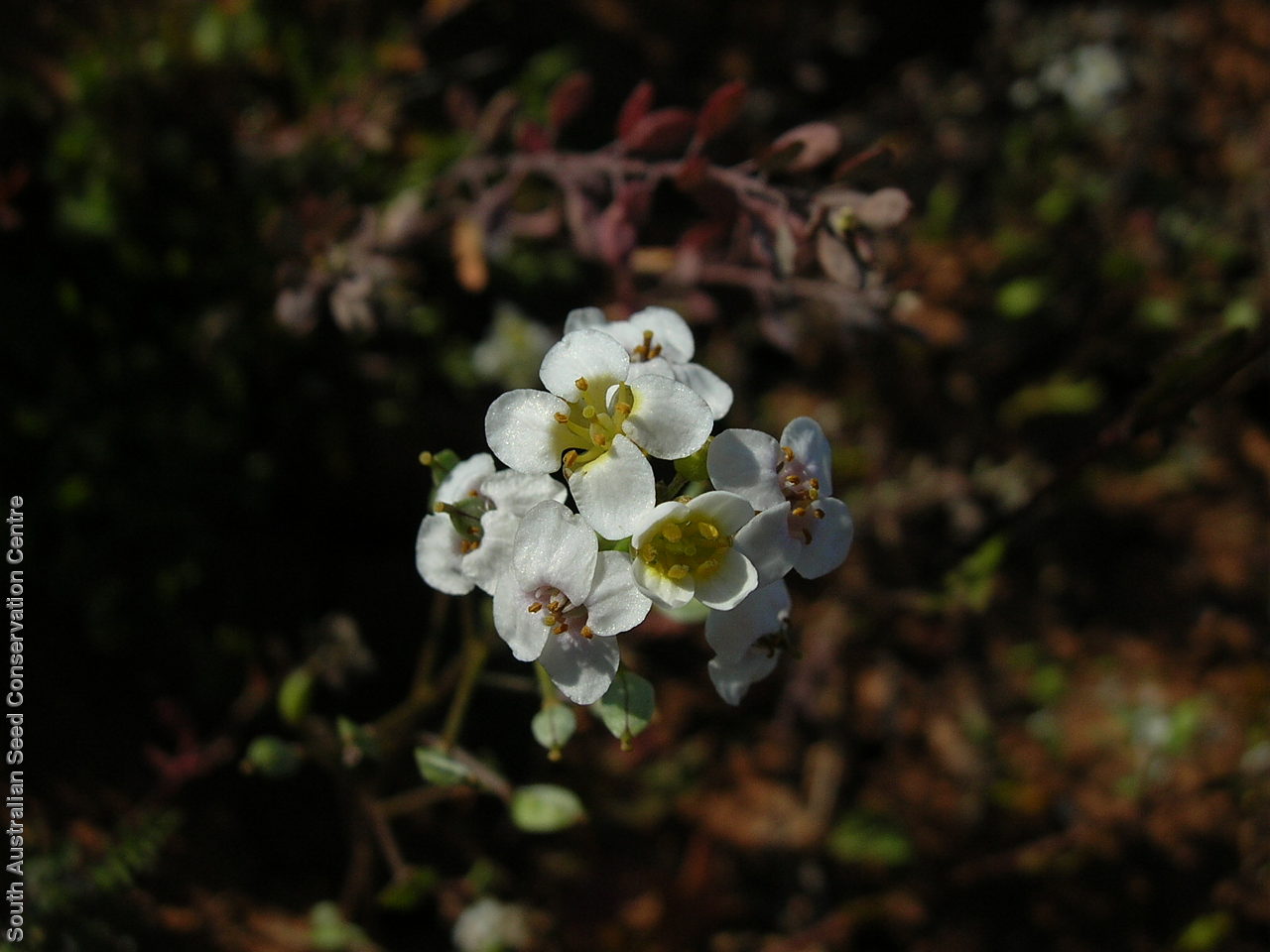
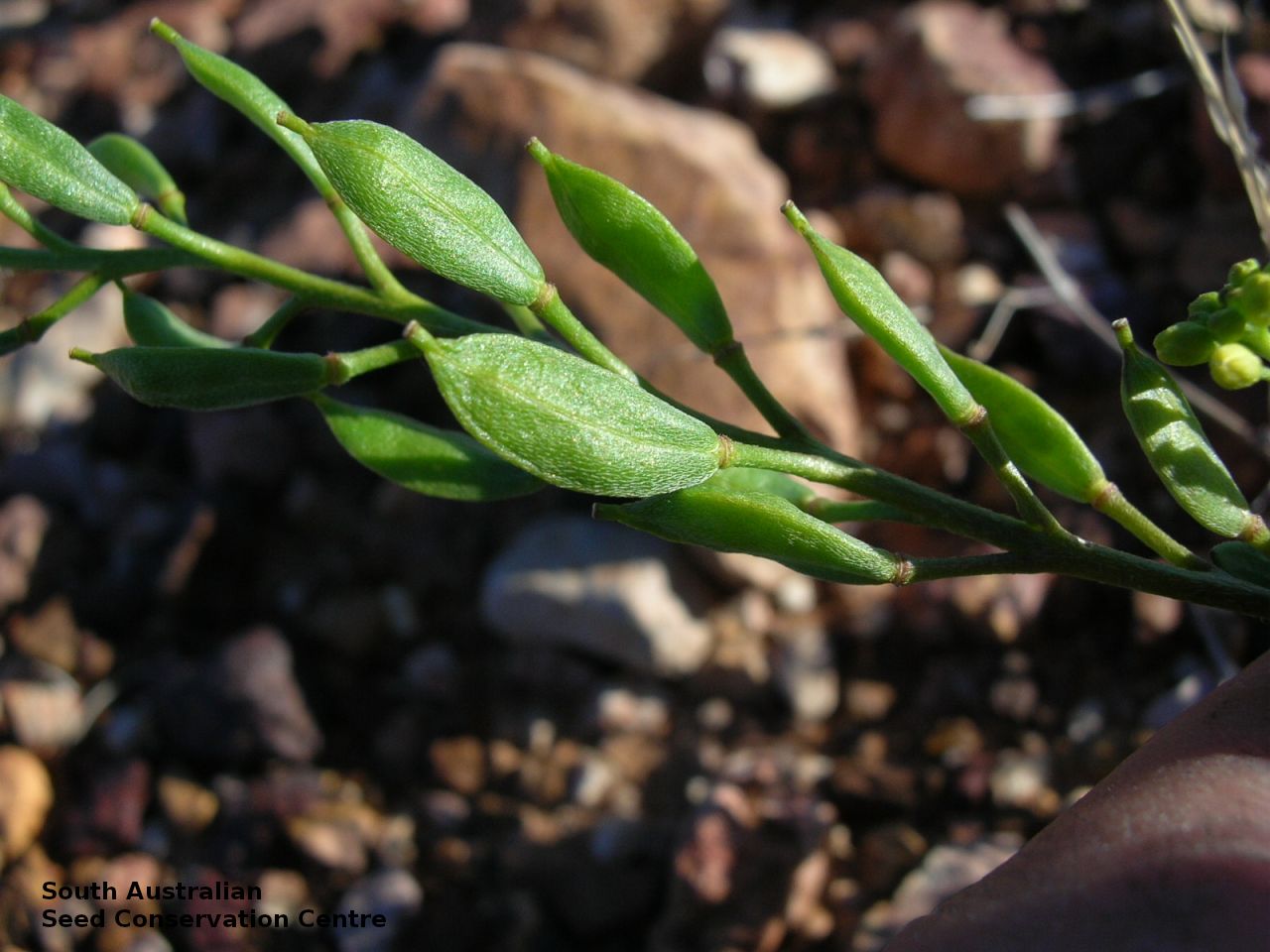
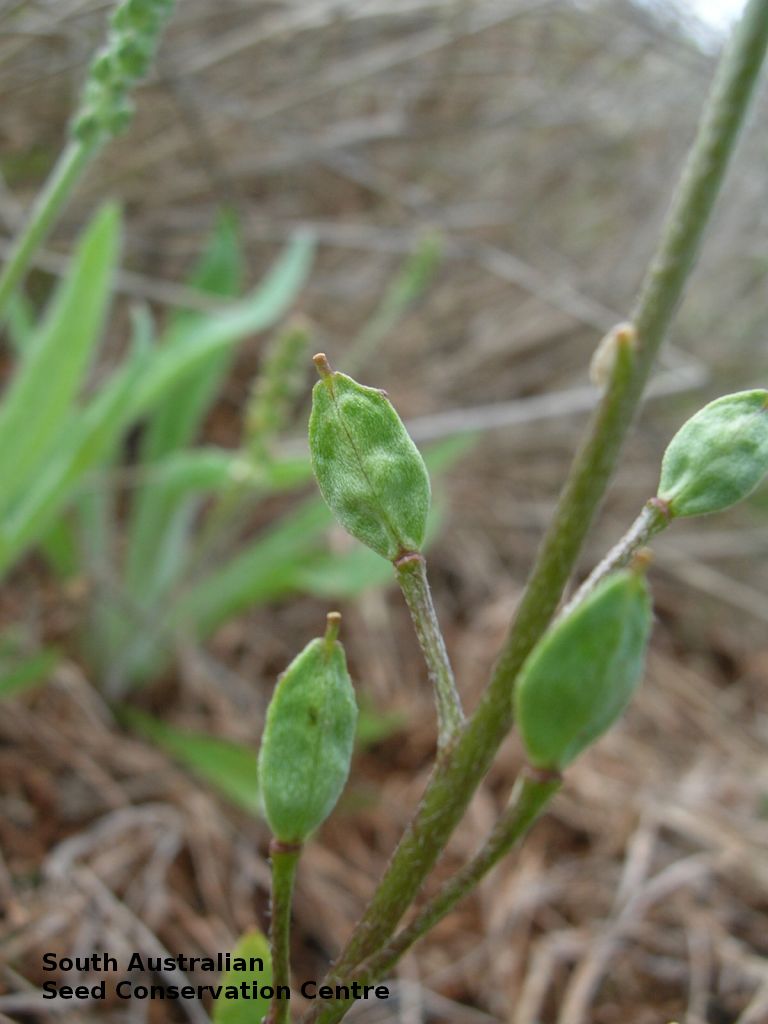
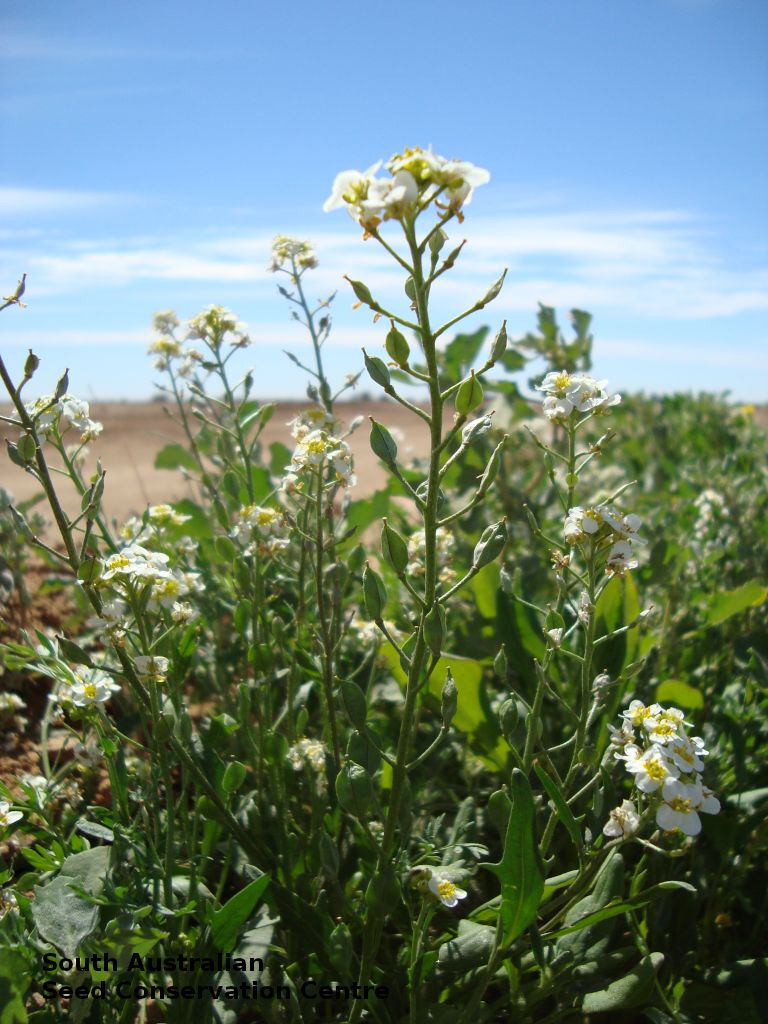
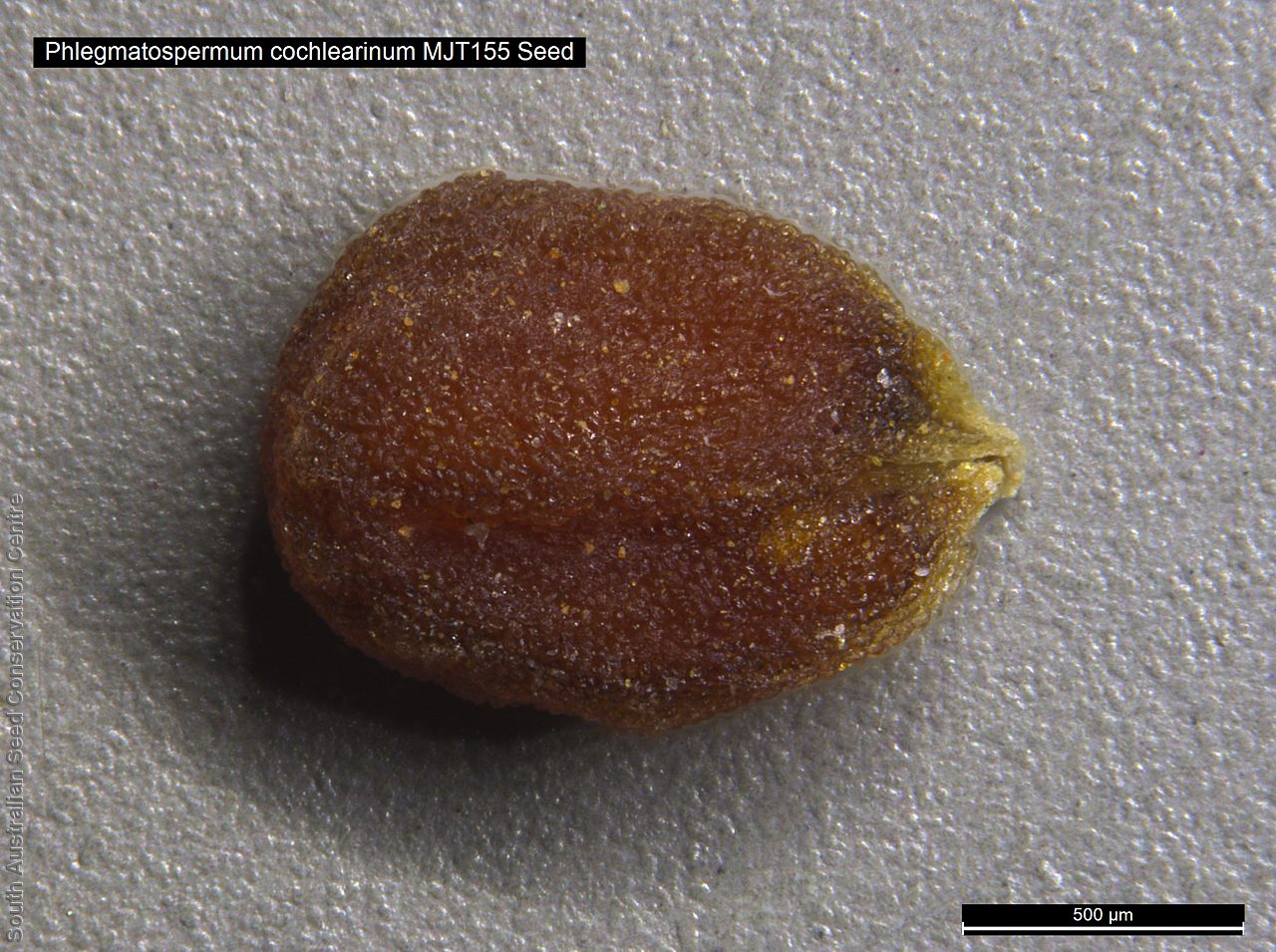
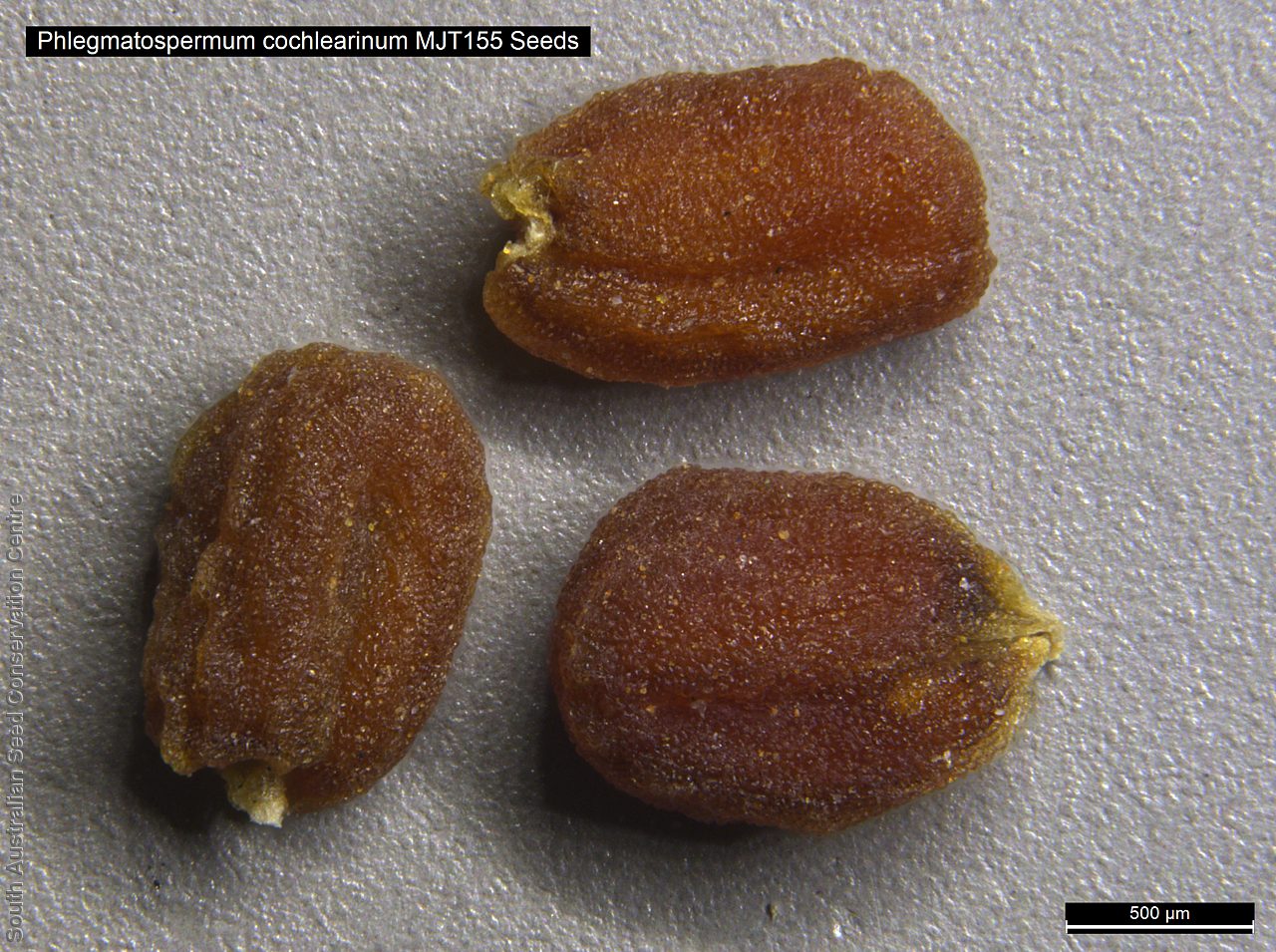
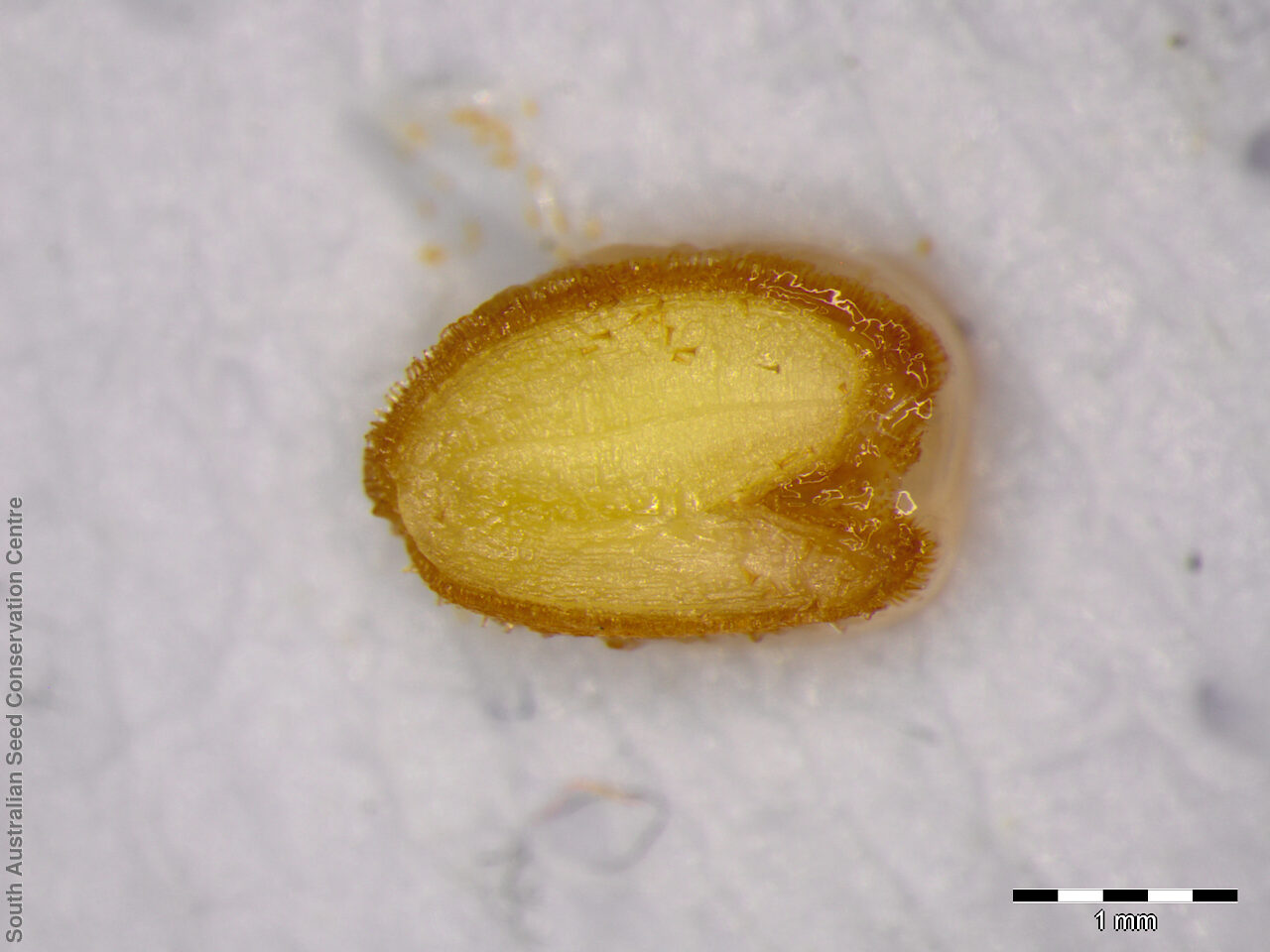
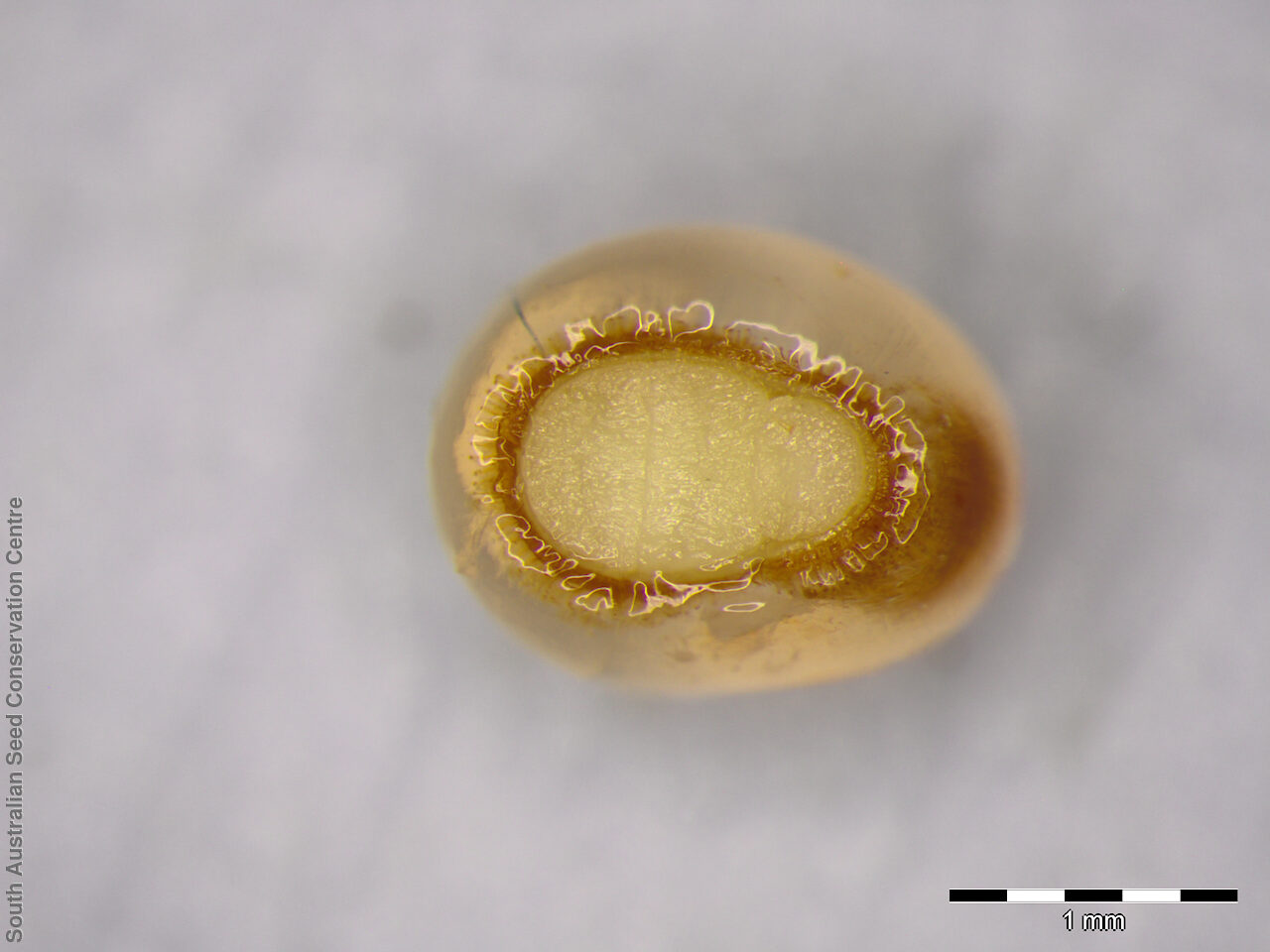

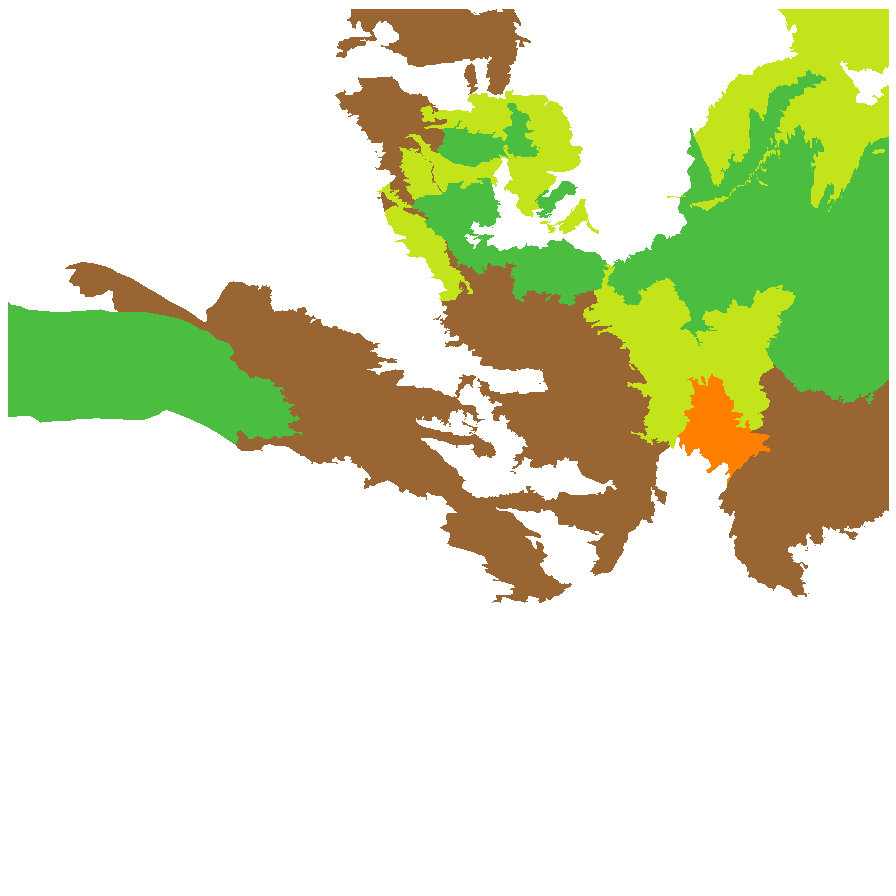
Botanical art
Prior names
Thlaspi ochrantha
Thlaspi cochlearinum
Phlegmatospermum ochranthum
Phlegmatospermum cochlearinum var. ochranthum
Hutchinsia cochlearina
Eunomia cochlearina
Capsella ochrantha
Capsella cochlearina
Hutchinsia ochrantha
Thlaspi cochlearinum var. ochrantha
Capsella cochlearina var. ochrantha
Common names
Downy Cress
Etymology
Phlegmatospermum from the Greek 'phlegma' meaning inflammation and 'sperma' meaning a seed, referring to the mucous seeds. Cochlearinum from the Latin 'cochlearis" meaning a spoon, referring to the spoon-shaped fruit pod.
Distribution and status
Found on the Nullarbor and in the north-eastern part of South Australia, growing on loam and clay in wet depressions.. Also found in Western Australia and New South Wales. Native. Common in South Australia. Common in the other States.
Herbarium regions: Lake Eyre, Gairdner-Torrens, Flinders Ranges, Eastern
AVH map: SA distribution map (external link)
Plant description
Erect annual herb to 35 cm high, covered in appressed hairs. Basal leaves in a rosette, elliptic to narrow-obovate, to 9 cm long; entire to toothed; stem leaves reducing. Inflorescence an elongated spike with white or yellow flowers. Flowering between July and September.; Fruits are brown spoon-shaped pod to 10 mm long, slightly winged and notched; hairs lying parallel with long axis of the fruit. Seeds are orange reniform seed to 2 mm long and 1.5 mm wide, with very fine tubercules. Seed embryo type is bent.
Seed collection and propagation
Collect seeds between September and November.
Place the pods in a tray and cover with paper to prevent seeds from popping out and leave to dry for a week. Then rub the dried pods gently by hand to dislodge the seeds. Use a sieve to separate the unwanted material. Store the seeds with a desiccant such as dried silica beads or dry rice, in an air tight container in a cool and dry place. From two collections, the seed viability was high, ranging from 80% to 100%.
| Location | No. of seeds (weight grams) | Number of plants | Date collected | Collection number Collection location | Date stored | % Viability | Storage temperature |
|---|---|---|---|---|---|---|---|
| BGA MSB | 7,700 (11.89 g) 7,700 (11.89 g) | 50+ | 25-Sep-2007 | DJD855 Lake Eyre | 19-Sep-2008 | 100% | -18°C |
| BGA | 6,200 (7.11 g) | 20+ | 5-Oct-2010 | DJD1937 Lake Eyre | 1-Jan-2012 | 80% | -18°C |
| BGA | 6,900 (8.55 g) | 50+ | 28-Oct-2013 | DJD1937 Lake Eyre | 1-Jan-2016 | 95% | -18°C |
Number of plants: This is the number of plants from which the seeds were collected.
Collection location: The Herbarium of South Australia's region name.
% Viability: Percentage of filled healthy seeds determined by a cut test or x-ray.